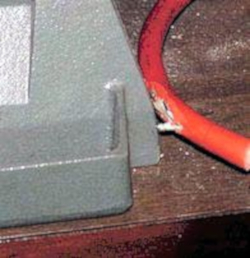Portable Tool Use with Extension Cords
In construction, extension cords suffer significant wear and tear. Most often, the damage is only to the insulation, exposing energized conductors.

An employee handling the damaged cord can be exposed to several hazard:
- Electric Shock: Exposed wires can deliver a harmful or fatal shock.
- Burns: Faulty cords may overheat, causing skin burns or fire.
- Fire Hazard: Sparks from damaged cords can ignite flammable materials.
- Trip Hazard: Frayed or tangled cords can cause slips, trips, or falls.
- Equipment Damage: A damaged cord can short-circuit or ruin electrical devices.
Repairing Extension Cords
Only competent persons (CPs) or qualified persons (QPs) are allowed to repair damaged electrical equipment, including cords. However, in most cases, the best practice is to discard the damaged cord. A worker does not need to be a licensed electrician to repair a standard extension cord. Still, the worker must have the necessary knowledge and skills to make the repair correctly, understand the hazards involved, and be able to explain what could happen if the repair is done improperly.
The employer is responsible for determining if the person is qualified. The basis for the determination is normally from the electrical industry perspective. (Source: OR-OSHA)
Knowledge Check Choose the best answer for the question.
2-5. Why is damaged extension cord insulation a hazard?
You forgot to answer the question!
